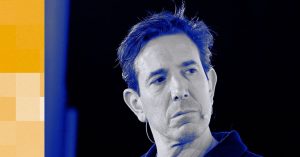“You want to show your employees you see them.”
— Meg Aldrich, associate administrator, corporate communications, Keck Medicine of USC
Just think of what effective ambassadors employees would be if they knew they mattered as individuals to their bosses, to their colleagues, to their organization. That feeling is not as common as it should be.
In this series, we’ve established that healthcare leaders need to know how to lead with personalization, meaning they have to see patients and employees in their full humanity. We’ve talked about why personalization is important, how we can shape our organizational cultures to facilitate it, and what leadership skills are required.
In the previous article, I said personalization is achieved when people know they matter.
But once you’ve done all that, how do you make sure your employer brand reflects this level of personalization that so many people crave?
At the 2024 Healthcare in the Age of Personalization Summit, we had a session about this titled Personalization Must Be Evident in Your Employer Brand.
This article is the seventh in a 14-part weekly series, in which I am sharing insights from that summit. We heard from a wide range of healthcare experts—leaders spanning all facets of healthcare organizations from the boardroom and C-suite to the patient’s bedside—covering topics such as navigating healthcare’s unknowns, reinvention strategies, patient experience, equity, and much more.
In thhis article I’ll share highlights from the panel discussion about why and how personalization must be evident in your employer brand.
Panelists included:
- Meg Aldrich, associate administrator, corporate communications, Keck Medicine of USC
- Cara Williams, vice president and chief human resources officer (CHRO), Cottage Health
Employer brand rests on your most important ambassadors: current and former employees. That’s why the panel included experts from HR and from corporate and executive communications. Your reputation as an employer depends on how existing employees feel about the work they do and how they’re treated. Those feelings are often shaped by how much of a voice they have and the range of opportunities they have within the organization.
Personalization Through Executive and Employee Voice
As associate administrator of corporate communications for Keck Medicine of USC, Meg Aldrich handles executive communications and works with colleagues in HR, media relations, and crisis communications.
She said people want to hear from their CEO about more than just corporate policies, especially when something big is happening.
“If you look back to the summer of 2020, with civil unrest and all sorts of bottled feelings and very important issues coming up,” she said, “people want to hear from their CEO. They want to hear about what happened, what matters to them, and how their personal concerns might be supported at the workplace.”
But people also want to be heard. What if they don’t agree with what they hear from the CEO? How do you maintain an individual focus when there’s something going on in the world and employees have different individual responses to it?
Aldrich uses what she calls an Issues Response Framework as a way to scale personalization in a situation when there are many viewpoints about complex issues.
“Issues Response Framework came out of the need where various people in the organization felt like we need to respond to what’s happening,” said Aldrich. “Whether the current issue is a political issue, a wildfire in Southern California that’s impacting our employees, a global conflict. What is our stance as an organization?”
She said part of her role in a crisis is looking at sensitive issues. First she advises people to consider whether or not the organization should be voicing a stance in a particular situation, offering these guidelines (extracted from her presentation slide):
- Not too fast! Situations evolve quickly. Sometimes it’s best to wait for more information.
- Is it about us? There are many terrible things in the world, but do we have something to add to the conversation that would be helpful?
- Watch out for virtue signaling. Are we saying something because we authentically care or because we want to show we are aware?
“In these high-touch moments, you can make a meaningful impact with an employee,” said Aldrich. “It might just be asking our staff to be mindful and patient and careful with their colleagues who might be going through difficult times. But this is a new space in communications. Each issue in each matter is different.”
Likewise, each employee is different.
For example, Aldrich said two of their health system’s hospitals are in different communities. Verdugo Hills Hospital is in the largest Armenian diaspora outside of Armenia, and their Arcadia Hospital is in a predominantly Mandarin-speaking community.
“We have very different audiences that we need to consider and look at and see differently,” she said.
The Issues Response Framework is about providing a process to follow, to accomplish that.
“What are the questions we are all going to ask when we huddle? What matters to us? Who’s going to be in the room? It’s a step-by-step process,” said Aldrich. “With any communications, make sure that you have your own small focus group that is diverse, because everyone reads something or receives information with their own interpretation. One group may read it and take it one way. Someone else may take it another way, and yet a third way. It’s important to gather the input and voices of individuals who have different perspectives.”
It’s a heavy lift to be in touch with what matters to different groups. A lot of those answers exist within an organization’s own employee base. Just think of how empowering it is for them to see that this reputable institution cares about what they think.
Talk about empowering somebody overnight.
Personalization Through Nonlinear Career Paths
Cara Willliams is vice president and CHRO at Cottage Health in Santa Barbara, Calif. She shared what Cottage Health has been doing to be more personalized in the development, training and advancement opportunities available to employees.
“The pandemic pushed us to think differently in terms of retention because there are so many other opportunities outside of the traditional healthcare bubble, and people want that,” said Williams. “So they’re leaving in droves.”
So Cottage Health reconsidered their workforce development strategy to make it more personalized, creating nonlinear career paths.
“We send someone back to school to go do something totally different,” she said. “We call it ‘other side of the fence’—giving people the opportunity to shadow someone in a job and see if that might be something they’re interested in. It might be something they’ve never thought of, or never thought they’d be good at. Nonlinear means that the org chart looks like a spaghetti drawing, and it’s really helping people be their best selves and giving them the tools to do that.”
By giving them the tools, she means going well beyond just paying for the schooling itself.
“There was a program where we took medical assistants and we sent them back to school to become radiologic technologists, and we paid for them to go to school, but you can’t go to school and work,” said Williams. “So we supplemented their wages so they could go to school full time and keep their full-time salary. And now they’re going to be Rad Techs, which is a better career path for them.”
But it doesn’t just help the individuals, it helps the organization build up a workforce for a job that’s hard to recruit for, said Williams. The program also takes employees, who already have relationships in town, and helps them grow their careers by staying in the community rather than moving away.
Williams said they’re expanding the program based on lessons learned along the way.
“One of the things we didn’t factor in is driving to the school and how much gas costs,” she said. “We supplemented their wages and we paid for school, but they came to us and said it’s really expensive to drive to the school, which is a little further out than where everyone lives. So we’re pushing our boundaries.”
This program shows me that the organization sees this as an investment rather than a cost.
When we invest in employees in ways that support their dignity and humanity—through financial investments that expand someone’s career opportunities, or communications investments that give people a platform for their voices to be heard—we honor their individuality. They become influential ambassadors for your employer brand, because they have experienced the personalization first-hand.
The success of an organization is no longer about the business defining the individual. It’s the individual defining the business. So we have to be careful about how we see and treat our employees. If they’re going to be at the forefront of our institution’s brand, we have to recognize the investment that we’re making, not just for the short term, but for the long term.
Watch this short video for more from the panel.
Next time: I kick off the second half of the series, which focuses on patients as consumers. The next article will share the insights from a summit session on health disparities and leading change through collaboration and innovation.
Read the full article here








